Trees Love Proper Cuts


Published September 29, 2010, By STEVE HOUSER
If you are considering pruning your own tree(s) or possibly hiring a professional company, please make sure that each cut is made at the proper angle and not torn at the base of the cut. Why? Trees do not grow new “skin” after a cut is made; they “compartmentalize” (or wall off) the cut by growing inward from the outer edges each year. Over time, the outer edges, called “wound wood,” eventually grow together and effectively seal or compartmentalize the cut, as long as it is made properly.
A proper cut is made at the “branch collar,” which is a slightly raised or wrinkled area where the limb attaches to the trunk of the tree or to another limb. The branch collar is apparent on some species but may be harder to find on others. A cut made at the branch collar will help compartmentalize the cut faster, which reduces the time it is open for decay, pathogen entry or borer damage (damage from a wood-boring insect). Research shows that a proper cut made at the branch collar preserves the tree`s natural defense boundaries, which are located just under the branch collar.
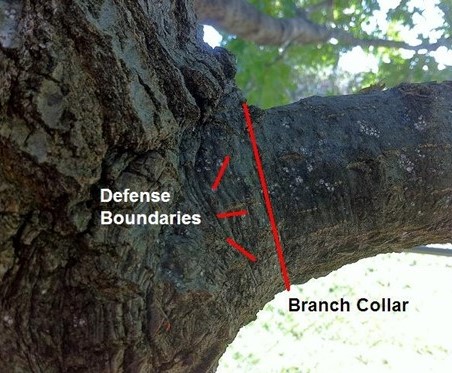
A cut made too flush with the trunk removes some (or all) of the tree’s defense boundaries and creates a larger wound than a cut made at the branch collar. Notice that the wound wood in the photo below does not grow evenly on all sides because the branch was cut improperly.
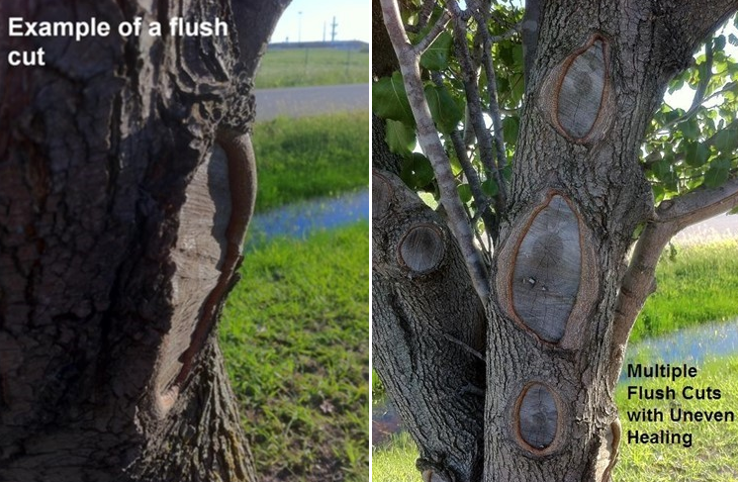
If a cut is made too far out from the branch collar, the tree tries to compartmentalize the wound until it eventually seals it, which may leave a slight “stump.” If a proper cut is made at the branch collar, it will grow tissue evenly from all sides of the cut (see top photo).
A “tear cut” is created when the weight of a limb causes it to fall before the cut is actually completed. This causes a “tear” in the live tissue at the bottom of the cut, as shown below.
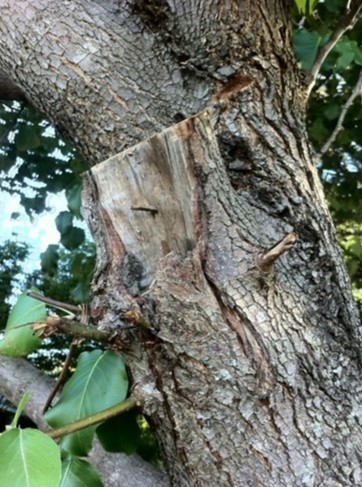
Trees do not like “tear” cuts. (Would you prefer that your surgeon provide a careful incision or a “tear” cut?) These tear cuts can be prevented by making several smaller cuts in stages, in order to remove the weight of the limb to a shorter stump before making a final cut. For live or dead limbs, start with a slight cut (or “under cut”) on the underside of the limb, followed by a cut on top of the limb and slightly farther out from the undercut. When only a short stump remains, a final cut is made at the branch collar. Larger and longer limbs will require the removal of weight in several sections before a final cut is made.
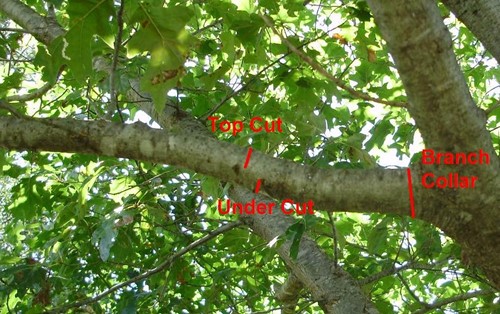
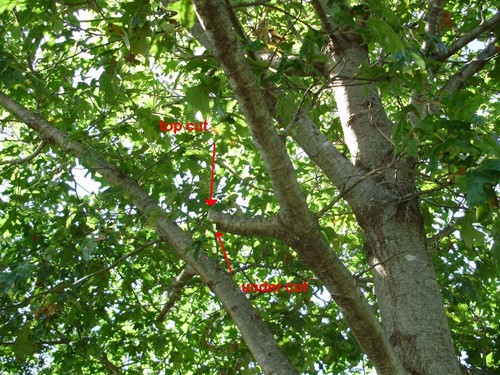
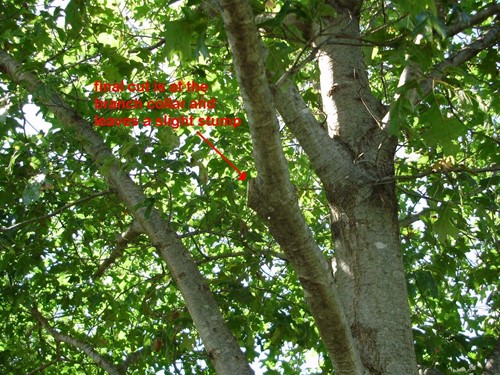
Proper branch collar cuts are the mark of a true professional, especially when the cut is on the end of a 90-foot-long limb. It may cost more to hire a professional, but proper cuts show the respect and level of care that your trees deserve.

